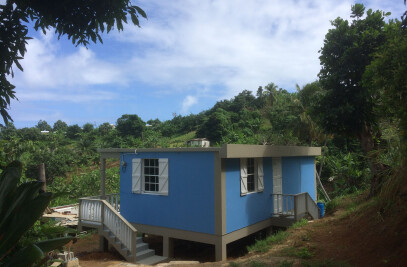On 25 April 2015, a magnitude 7.8 earthquake struck Nepal, toppling multi-story buildings in the cities and creating landslides and avalanches in the Himalayas. Only 17 days later, there was another major quake with a magnitude of 7.3, slightly eastwards from the first. Nearly 9,000 people died and more than 22,000 suffered injuries. Hundreds of thousands of people lost everything. The quakes’ were most devastating in remote rural areas, making the response extremely challenging. Many people were without shelter and the hospitals were forced to treat casualties on the roads.
Anandaban is a flagship hospital and the main referral hospital for leprosy complications in the whole of Nepal, and one of the only places where people can access life-changing reconstructive surgeries. Without Anandaban Hospital, there would be very little support or essential surgeries available to leprosy-affected patients, according to the Leprosy Mission UK.

The design used a reinforced concrete frame with brick infill walls to comply with stringent seismic safety standards. The context-specific sustainability strategy includes naturally ventilated patient rooms and rainwater harvesting. The new building is cut into the sloped site and uses the existing contours of the site to allow direct level access on the ground and lower ground floor.
Anandaban is Nepali for ‘forest of joy’. Nestled in a forest, it provides peace and tranquillity for people with leprosy. The new expanded building will also serve the community through primary healthcare, emergency services, operating theatres and a maternity unit. Beyond withstanding the next earthquake, the new design should provide a full range of medical services in the hours and days following.







































